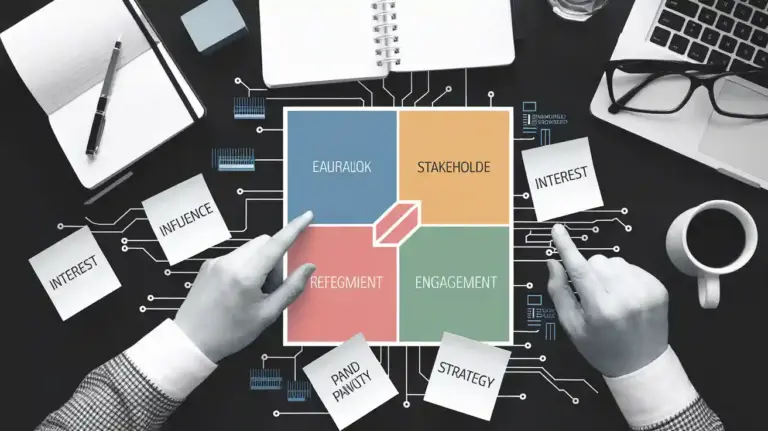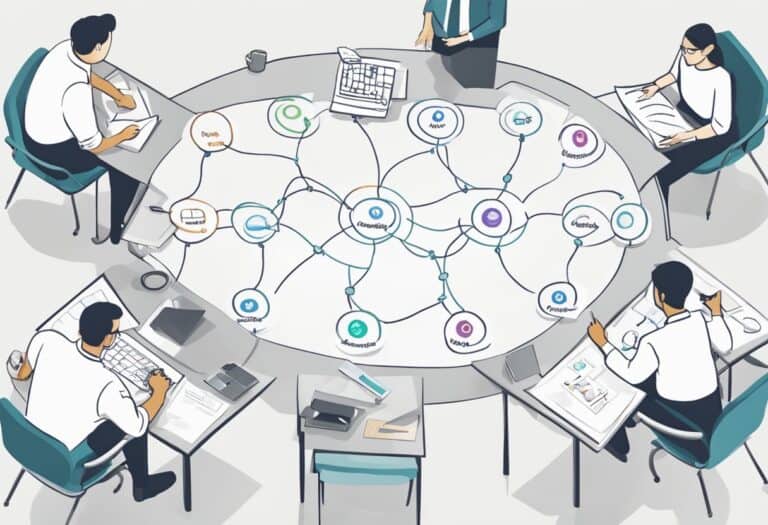You’re standing at the edge of a cliff, looking out at the vast expanse of change that lies before you. You know that it’s time to take the leap, but you’re not quite sure how to get there. That’s where change communication planning comes in.
Change communication planning is the process of creating a clear and effective strategy for communicating change to your organization. Whether you’re implementing a new policy, launching a new product, or undergoing a major reorganization, effective communication is key to ensuring that your team is on board and ready to tackle the challenges ahead.
In this article, we’ll guide you through the steps of creating a successful change communication plan, from identifying your audience to choosing the right channels to evaluate and refine your approach.
So take a deep breath, and let’s get started.
Understanding the Importance of Change Communication Planning
You might not realize it, but without a solid understanding of how to effectively communicate changes in your organization, your plans could fall flat and cause confusion among your team members. That’s why change communication planning is so important.
It involves tailoring messages to different audiences, determining the most effective communication channels, and measuring effectiveness to ensure that your message is getting through and being understood.
Tailoring messages is a crucial part of change communication planning. Different audiences may have different needs, concerns, and perspectives, so it’s important to craft messages that resonate with each group. For example, a message that’s appropriate for upper management may not be appropriate for front-line employees.
By taking the time to understand your audience and tailor your messages accordingly, you can ensure that your communication is relevant and meaningful to everyone who receives it.
Measuring effectiveness is another key component of change communication planning. After all, you can’t improve what you don’t measure. By tracking metrics such as open rates, click-through rates, and survey responses, you can gauge how well your messages are being received and make adjustments as needed.
This not only helps you improve your communication efforts, but it also demonstrates to stakeholders that you take communication seriously and are committed to ensuring that everyone is informed and engaged.
Identifying Your Audience and Their Needs
Now that you’re thinking about who you want to connect with and what they may be interested in, let’s dive into identifying the individuals that will benefit most from your message. This is where empathy mapping and stakeholder analysis come into play.
To effectively communicate change, you need to understand your audience’s needs, preferences, and motivations. Empathy mapping helps you get into the mindset of your stakeholders, allowing you to create messages that resonate with them. On the other hand, stakeholder analysis helps you identify who your stakeholders are, how they are impacted by the change, and what their level of influence is.
When conducting empathy mapping, it’s important to consider your stakeholders’ wishes, fears, and expectations. Use this information to craft messages that address their concerns and aspirations. For example, if your stakeholders are worried about job security, make sure your messages highlight the benefits of the change, such as new opportunities or increased productivity.
Additionally, consider the language and tone you use when communicating with your audience. Avoid jargon and technical terms that your stakeholders may not understand.
Stakeholder analysis, on the other hand, helps you prioritize your communication efforts. Not all stakeholders are created equal, and some may have more influence or power than others. By analyzing your stakeholders, you can determine who to focus your efforts on, what level of communication is required, and what channels to use.
This will help you craft messages that are relevant, timely, and effective, ensuring that your change efforts are successful.
Crafting a Clear and Compelling Message
Crafting a message that captivates your audience is key to successfully conveying your ideas and inspiring action. To begin developing a clear and compelling message, start by identifying the tone you want to convey. This will help you tailor your content to better resonate with your audience.
When developing tone, consider the emotions you want to evoke in your audience. Do you want to inspire them to take action? Convey a sense of urgency? Perhaps you want to build rapport and establish trust. Whatever tone you choose, make sure it aligns with your overall messaging and the needs of your audience.
Tailoring content is the next step in crafting a clear and compelling message. This involves understanding the specific needs and interests of your audience and creating content that speaks directly to those needs. Make sure your message is concise and organized, focusing on the key points that you want to convey.
By doing so, you can create a message that captures your audience’s attention and inspires them to take action.
Choosing the Right Communication Channels
Get your message out to the world by selecting the ideal channels, like finding the perfect fishing spot with the right bait to reel in your catch. Choosing the right communication channels can make or break your efforts to get your message across.
With so many options available, it can be overwhelming to decide which channels to use. However, by knowing your target audience and understanding the strengths and limitations of each channel, you can make informed decisions and achieve your communication goals.
To choose the right communication channels, consider the following:
- Social media: Social media platforms like Facebook, Twitter, and Instagram are great for reaching a large audience quickly and easily. They are ideal for sharing news and updates, engaging with your followers, and building a community around your brand.
- Email marketing: Email marketing is a more targeted approach that allows you to reach specific individuals or groups. It’s a great way to send personalized messages, share exclusive content, and promote products or services directly to your subscribers.
- Other channels: Depending on your message and audience, other channels like blogs, podcasts, webinars, and events may also be effective. Consider the strengths and limitations of each channel before deciding which ones to use.
By selecting the right communication channels, you can ensure that your message reaches your target audience effectively and efficiently. Remember to tailor your message and content to each channel and use analytics to measure your success. With a well-planned communication strategy, you can achieve your goals and make a lasting impact.
Evaluating and Refining Your Communication Plan
As you evaluate and refine your communication plan, you’ll be able to see what’s working and what’s not, allowing you to adjust your approach and optimize your efforts for even greater success.
Measuring effectiveness is key in determining whether your communication plan is achieving its intended goals. You can use a variety of metrics to assess the impact of your messaging, such as website traffic, social media engagement, email open rates, and feedback from stakeholders.
Once you have identified areas for improvement, it’s important to implement continuous improvement strategies. This involves making changes to your communication plan based on the results of your evaluation, and then testing these changes to see if they have a positive impact.
You may need to experiment with different communication channels, messaging, or timing to find the optimal approach for reaching your target audience.
By regularly evaluating and refining your communication plan, you can ensure that you are always delivering the right message to the right people at the right time. This will increase the effectiveness of your communication efforts, and help you to achieve your desired outcomes.
Remember to stay flexible and open to new ideas, as communication is a constantly evolving field and there’s always room for improvement.
What Are the Key Steps in Change Communication Planning?
When it comes to change communication planning dos donts, there are several key steps to consider. First, it’s essential to establish clear objectives for the communication plan. Next, identify the target audience and tailor the messaging accordingly. Additionally, ensure open and transparent communication throughout the entire change process.
Conclusion
Congratulations! You’ve successfully navigated the intricacies of change communication planning. Just like a skilled sailor, you’ve charted a course that will lead your team to success.
But remember, the journey is not over yet. You must continue to evaluate and refine your communication plan as you encounter new challenges and obstacles along the way.
Think of your communication plan as a compass that will guide you through rough waters. By identifying your audience, crafting a clear message, and choosing the right communication channels, you’ve set yourself up for success.
But just like a sailor, you must always be vigilant and adaptable. Keep your eyes on the horizon and be ready to make course corrections as needed.
With a well-crafted communication plan and a steady hand at the helm, you can navigate any change with confidence and success.





